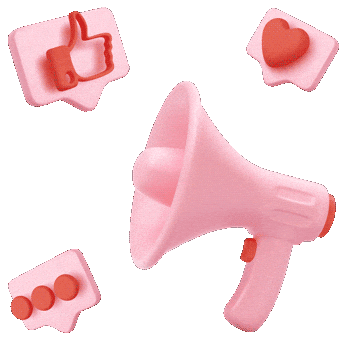4 Steps to Creating Strong Visual Branding

When you think of prominent brands, what do you see in your mind’s eye? Chances are high, you associate your favorite product with that brand. You also probably imagine the brand logo, type, and colors.
To illustrate, the word Coca-Cola usually conjures up a vision of the giant soft drink company’s distinct Coca-Cola red ribbon logo. Louis Vuitton probably brings to mind the LV monogram, the brand’s flower motif, and its iconic brown color.
Before approaching your choice of branding company, it pays to know a bit about the process of building a visual identity. Read on for the steps to creating strong visual branding for your company.
Identify Your Target Customers
To whom are you marketing your brand? To whom should it make an impression? Who will be buying from you or using your services? The answer to all of these questions is your target customers. These are the people whom you wish will take notice of you, buy from you, and pay you for your services.
And the first step to creating a visual identity or a visual brand is to identify that demographic that must find your brand relatable and appealing.
The reason is simple. An essential part of making sure your market likes you is by making your brand likable. That includes ensuring your visual branding is on point and is appealing and attractive to your target market.
Therefore, as a crucial first step, you need to identify your target market. How old are the people who make it up? What are their jobs or occupations? Are they predominantly male or female? What are their hobbies and interests? Are they single or married? Are they C-suite executives?
A few tips on identifying target market and audience. Look at your current or potential customers and analyze their demographic characteristics (age, gender, income, civil status, etc.). Study their purchasing habits, too. How much do they usually spend, and what do they spend it on? Your customer data will help you identify your brand’s target market.
You can also check who your competitors’ target market is. Do this for every product and service in your portfolio. For example, if you make healthy juice drinks, a competitor’s healthy juice drink’s target market is likely to be your target market, too.
You can also go the aspirational route. This is particularly relevant if you don’t have an existing customer base yet. Knowing your products and their attributes, who do you wish will buy them from you? The answer — that’s your target market. What are the potential applications or uses of your product, then who are likely to use your products that way? Again, the answer is your target market.
After finding out who your target market is, you need to analyze their tastes. Generally, you know younger customers are tech-savvy and might prefer modern and minimalist visuals. To this end, a lot of brands have embraced similar-looking sans-serif typefaces, abandoning their script and serif typefaces of old and even redesigning their sans-serif typefaces so they can be bolder, cleaner, edgier, and more modern.
To keep up with their increasingly younger demographics, luxury brands like Burberry, Balmain and Yves Saint Laurent have changed their typography to sans-serif. Google of course, changed to sans-serif, and Airbnb and Spotify also did the same.

Once you know who your target market is as well as their likes and dislikes, that’s the only time you can even begin conceptualizing your brand visual identity. That way, you will know what will work and will not work in the context of your target market’s tastes.
Just to illustrate, suppose you are a manufacturer of high-density polyethylene pipes, and males 25-50 years old who are buyers or decision-makers in the mechanical, engineering, and plumbing segment comprise your primary market.
Since you have a clear picture of your target demographic, it should also be clear to see that a pink and flowery logo or a stark monogram logo with Gothic vibes should never be part of your visual branding.
A good direction for our example would be a logo that has a recognizable section of a pipe with a pipe fitting, which takes the guesswork out of what products the company sells. When it comes to color, blue and black (on a white background) make a good combination. Men prefer blue, and the color also represents stability and confidence. Black represents power and strength. Blue and black, together, are also found on HDPE pipes. The typeface should be something bold and strong, so bIdentify Your Brand Colorsold, sans-serif type will work.
Ask Yourself Who You Are
Who are you as a company or brand, and what are your products and services? What are your values, your story, and your activities? The answers to these questions will comprise a significant part of your visual identity.
Earlier, you had to identify your target market to understand what they would find appealing and what they would find off-putting. This time, you need to audit who you are to articulate what you need to communicate. By identifying your target market, you now have a context with which to frame who you are.
One of the things you can try is to look at your successful competitors and see what elements comprise their logo. You should not copy their logo, of course, but you can make it your guide in deciding on your colors and appropriate typefaces, at the very least.
You may also think up words you wish would be consistently associated with your brand (i.e., your buzzwords). Is it modern, edgy, hip, and cool? Then you want a visual identity that reflects that.
Come up with different logo designs. Next, conduct focus group discussions among respondents that have the same demographic characteristics as your target market. Let the focus group members describe your logo samples; ask them what the logos convey and what words come to mind when they see the logos. You can then choose the logo that focuses group members associated the most with your buzzwords. Naturally, you should also ask focus group members which logos they liked and hated.
Identify Your Brand Colors
After identifying your target market and verbalizing who you are and what you stand for, you can decide on your brand colors. In other words, which colors will convey who you are to your target customers?
As you know, colors can trigger and are associated with emotions. Red can stimulate, excite, and energize, while green refreshes and evokes the peace of nature. Black exudes power and elegance.

Of course, colors mean different things to different people. For instance, blue can make you feel calm. It is also usually associated with professionalism and trustworthiness. However, blue can also seem quite cold.
Another example is yellow. It is usually associated with warmth and optimism. But for some people, it can seem dangerous and alarming. Black also used to be primarily associated with mourning.
Colors are also somewhat nuanced. They may trigger different feelings and convey various emotions depending on their intensity, placement, coverage, and background or accompanying colors. For instance, red on white should elicit different emotions than red on yellow.
This is the reason you need to identify your target market before you start selecting your brand colors. You will use your target customers as your framework for color selection. Knowing your target customers’ color psychology will make choosing your brand colors relatively more straightforward.
For example, if you are a high-end wellness resort and destination, a logo with greens or cool blues, perhaps with a tree or plant (to symbolize nurturing, growth, etc.) is logical. Moreover, your company website is likely to repeat the theme of nature, retreat, wellness, and relaxation throughout.
On the other hand, choosing to use a red logo on white will probably not convey your brand identity in the best possible way. The color red is often associated with danger and stress and can thus trigger anxiety — not something you really want when you’re a wellness resort.
Design Your Logo and Choose Your Type
At this point, you can design your logo, choose your type, and lay out the rules for using your visual branding collateral.
Designing a logo is best left to the professionals. But if you must do it yourself, remember that it must be simple, memorable, and authentic. It’s simple when it doesn’t have too many elements to distract and detract from it. It’s memorable when it’s impactful from the get-go. And it’s authentic when it speaks about you and who you are as a brand.
You can use the online publishing and design tool like Canva to design your logo. Alternatives to Canva include Pickmaker, VistaCreate by Crello, Venngage, and Adobe Creative Cloud Express. Some of these tools have AI-based platforms, which should make DIY logo design a little bit easier for the inexperienced.

As a case in point, look at the logo of renowned fashion brand Chanel, which is made up of two interlocking Cs in bold type, originally black on white. The black calls to mind the little black dress that the brand popularized. It exudes power, class, and elegance. The balance of the mirrored, interlaced Cs and the black text on its white background, even the type, also radiate balance and symmetry.
You must also decide whether your logo will be a logotype, a logomark, or a combination mark, which is a combination of logotype and logomark.
Logotypes are made up exclusively of text, typically the brand name spelled out in full. Examples include Visa, Coca-Cola, and Google. Logomarks are graphic or icon-based logos. The golden arches of McDonalds, the bitten apple of Apple, and the swoosh of Nike are all logomarks. Finally, combination marks have both text and graphic elements. The logos of Airbnb, Adidas, and MasterCard are examples of combination marks.
If you’ve decided to use text on your logo (i.e. you’ve settled on a logomark or a combination mark), the next thing you need to decide is your logo’s typography. Which font should you use?
First, choose among serif (e.g., Times New Roman and Georgia), sans-serif (e.g., Arial and Helvetica), and script (e.g., Lucida Handwriting and Pacifico). Letters in serif typefaces usually have ending strokes or “tails,” while sans-serif typefaces don’t have them (sans means “without”). Script letters, meanwhile, mirror calligraphy or handwriting.
Here are a few rule of thumb guidelines on font selection. You don’t have to follow them. But they do make for a handy guide.
- Choose serif if your brand stands for traditional, classic, and trustworthy. Serif fits schools, banks, and other similar institutions.
- Choose sans-serif if your brand stands for modern and minimalist. Think Ikea. Tech companies also usually go for sans-serif typefaces.
Choose elaborate script types if you want to convey elegance or opulence, and handwriting-based types if your brand wants to be perceived as natural, casual, and approachable. Cocal-Cola’s logo uses a handwriting-based typeface.

Once you have your logo and type, make sure to create guidelines about using them. Where on the page should they be? How much white space should surround your logo? Things like these will ensure your visual identity is consistently presented across different media.
For you to be memorable, you must first be recognizable. Although your business is so much more than your logo, type, and colors, these are crucial elements of your brand identity. These visual branding components remain in your customer’s mind as a physical representation of your brand, so the utmost care must be taken in their creation and use.
How about you? What image will your brand evoke in your customer’s mind? That’s what this marketing company in Dubai will help you figure out and decide.
Author: Stuart Harris, the Creative Director at Yellow, a Dubai branding agency.








